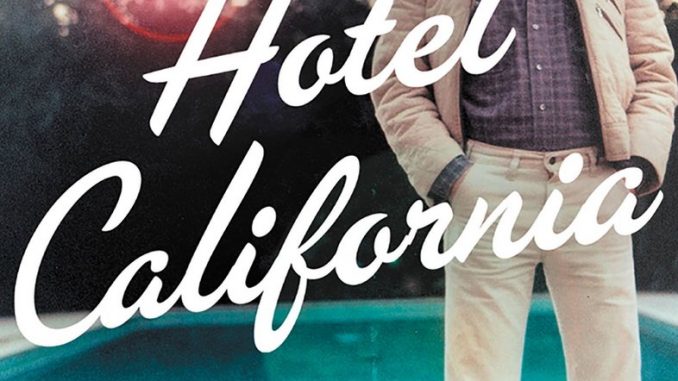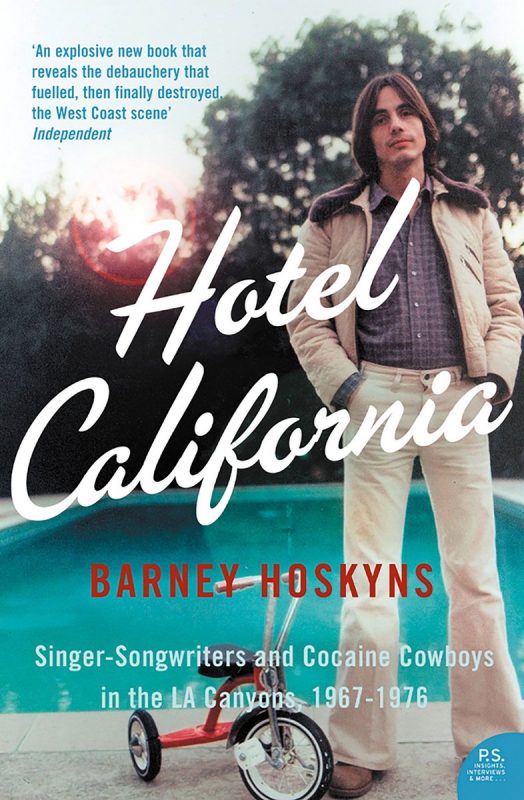
 Subtitled “Singer-Songwriters and Cocaine Cowboys in the LA Canyons, 1967-1976”, this the story of how Country mixed with pop, rock and folk to create something new in the hills above Los Angeles. It’s also the story of how big business crept in and spoiled it all.
Subtitled “Singer-Songwriters and Cocaine Cowboys in the LA Canyons, 1967-1976”, this the story of how Country mixed with pop, rock and folk to create something new in the hills above Los Angeles. It’s also the story of how big business crept in and spoiled it all.
Hoskyns follows the careers of some of the key players from the late sixties, when the influence of The Byrds was spreading out into the wider musical world of Southern California. One of the people who he follows throughout the book is JD Souther. From his days with Longbranch Pennywhistle, in the 60s, through his associations with The Eagles and Linda Ronstadt to the late 70s. In many ways he is one of the central characters in the book.
Representing the business side of music, he looks at David Geffen and Elliott Roberts, who worked with nearly all the main names, through Asylum Records and Geffen-Roberts management. Hoskyns follows their influence on Joni Mitchell, The Eagles, Ronstadt, Jackson Browne and many others as musical collaborations and romances are picked up and dropped at bewildering speed, and increasing complexity.
And that’s the main issue with the book. Barney Hoskyns is a great writer, and a brilliant researcher, but ‘Hotel California’ just has too much in it. It begins at a slightly arbitrary start point, although you have to start somewhere, and just drifts to an end around 1977, which is quite reasonable as by then The Eagles and Linda Ronstadt were stadium filling acts with residencies in the Billboard top 10. But in between there are so many stories, so many interweaving relationships, and in the end it just becomes confusing. With so many artists, and assorted hangers-on featured, it is hard to get a feel for how careers progressed or what motivated them to produce music that we still talk about at AUK some 50 years later.
There is also little attempt to talk about the actual music. If you want a names, dates and places type read then ‘Hotel California’ is the book for you. But read slowly as you will need to absorb the tangle of contracts, affairs, release dates and drug busts.
If this book achieved one thing it was bringing Judee Sill back to her rightful place in the list of great singer-songwriters. In 2005 when the book was published Rhino Records were preparing ‘Abracadabra: The Asylum Years’ 2CD set, and unreleased material had just appeared. Hoskyns devotes a fair bit of space to her, but once again settles for straight narrative rather than trying to explain the mystery and magic in her songs.
Having complained about the sheer amount of information here, I have read ‘Hotel California’ enough for my 2005 copy to be distinctly dog-eared. But that has usually been a bit at a time when wanting to learn more about a specific artist. My love for Sill’s music and that of Warren Zevon started from reading Hoskyns’ words. This could have been at least 3 separate books. A history of Asylum Records, biographies of JD Souther and Linda Ronstadt and the story of the Eagles, but in the end the connections between the people, and their influence on each other’s work are what makes the music great, so maybe the only way the story could be told was just by getting all the facts down on paper and allowing it unravel in the reader’s mind and on their record deck.
At the end of the 2005 4th Estate paperback is an appendix called ‘Mellow Gold: The tape from California’ It lists over 100 songs from the subjects of the book as well as songs about the LA scene of the early to mid-70s. Maybe someone has already committed it to Spotify, I can’t find it if they have, but if you have the time and patience to do so it would make the best possible guide to American music of that golden era. And let me know if you do create that playlist…
I know Grame Tait has only recently featured the classic clip of her OGWT performance of ‘The Kiss‘, but there’s no such thing as too much Judee Sill.
Where it all started for Jackson Browne.. And the Eagles.


